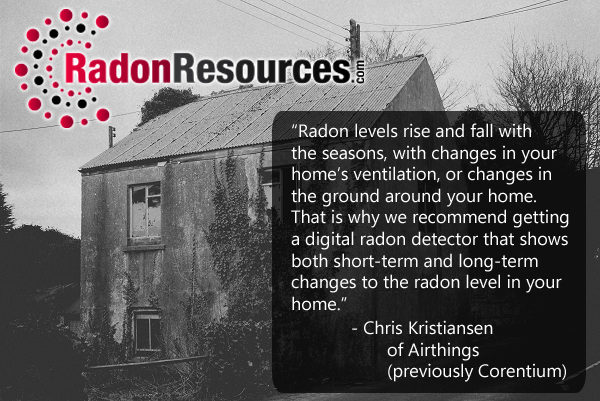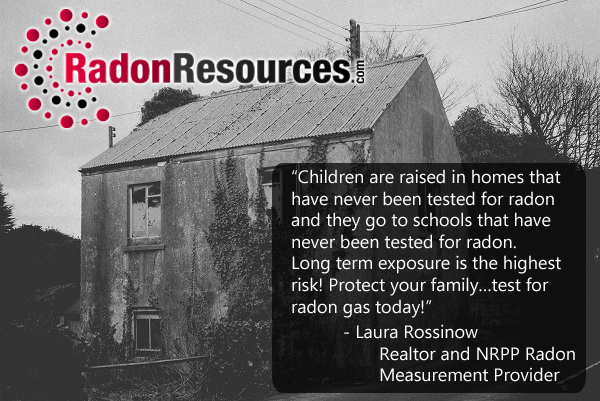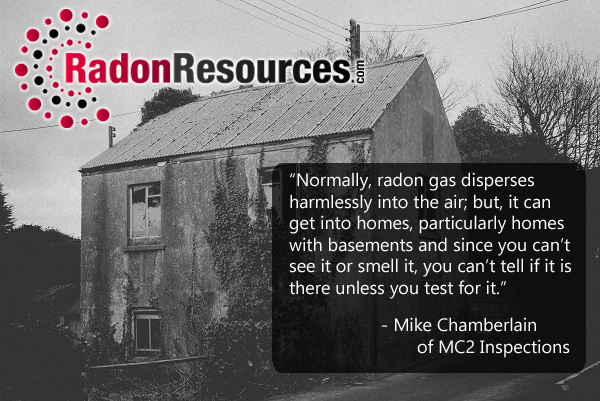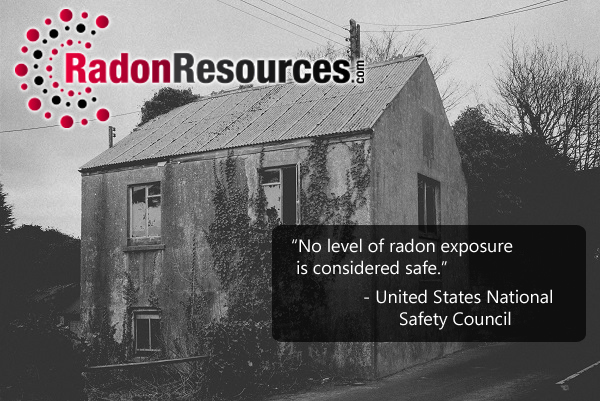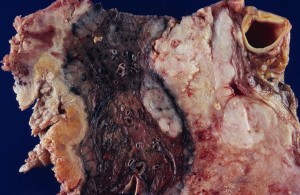Here at RadonResources.com we’re big on raising awareness about the dangers of radon gas. You’d be surprised how many people don’t know it is hazardous.
Did you know that it could be collecting inside your home this very moment?
We thought this was a good time to enlist some help, so we reached out to several folks to get their opinion on the topic. These contacts are experts on radon, and have considerable experience in the field.
Radon Is the Second Leading Cause of Lung Cancer In Non Smokers
According to the United States Environmental Protection agency radon gas is the second leading cause of lung cancer in non smokers. It is responsible for more than 21,000 deaths each year due to radon-induced cancer.
Lung cancer is more commonly associated with smoking and tobacco products, among other things. Many people believe that if they don’t smoke a day in their life they are safe from lung cancer, but that’s not true. You can get it even if you don’t smoke. All it takes is exposure to elevated levels of radon gas inside a residence or building.
“About 2,900 [radon-related] deaths occur among people who have never smoked.”
You can be exposed to the deadly gas in your home, schools, daycares, public buildings – like libraries – or even your place of work.
In January 2005, Dr. Richard H. Carmona – the United States Surgeon General at the time – issued a national health advisory on radon. You can read that here.
In that report was the following information:
The Surgeon General’s Workshop on Healthy Indoor Environment is bringing together the best scientific minds in the nation to discuss the continuing problem of unhealthful buildings. Indoor environments are structures including workplaces, schools, offices, houses and apartment buildings, and vehicles. According to a recent study, Americans spend between 85 and 95 percent of their time indoors.
In just the past 25 years, the percentage of health evaluations that the National Institute for Occupational Safety and Health at the Centers for Disease Control and Prevention (CDC) has conducted related to indoor-air quality has increased from 0.5 percent of all evaluations in 1978, to 52 percent of all evaluations since 1990. This means that in those years, the evaluations related to air quality concerns have increased from one of every 200 evaluations to one of every two.
The problem is also adversely affecting our children’s health as millions of homes and apartments and one in five schools in America have indoor air quality problems. This can trigger various allergies and asthma. Asthma alone accounts for 14 million missed school days each year. The rate of asthma in young children has risen by 160 percent in the past 15 years, and today one out of every 13 school-age children has asthma. Dr. Carmona is especially focusing on how unhealthy indoor environment affects children, as he promotes 2005 as The Year of the Healthy Child.
So, we’ve established radon is a problem. But how do you identify it? Can you prevent it or get rid of it?
Radon Testing Is Key
Radon is difficult to detect. In fact, the only way to discover its presence in your home, office, or residence is to test for it specifically. You can either do this yourself with the appropriate testing equipment, or you can hire a professional.
“Normally, radon gas disperses harmlessly into the air; but, it can get into homes, particularly homes with basements and since you can’t see it or smell it, you can’t tell if it is there unless you test for it.” – Mike Chamberlain of MC2 Inspections.
As Mike says, testing is the only way to tell whether or not radon is in your home. But just what is radon?
“Radon is a ‘noble’ or ‘inert’ gas, which means it doesn’t combine readily with other elements. Radon is the heaviest known gas, 9 times denser than air, and it consists of one, tiny, single atom, so it can penetrate most common building materials like sheet rock, mortar, wood, most insulation, even concrete, block walls and or flooring.”
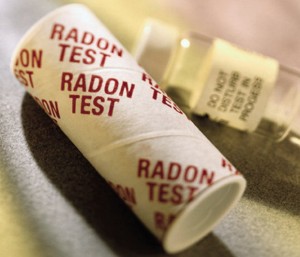 The invisible gas can seep into your home, where it collects in greater amounts. Since it doesn’t have an odor, there’s no way to tell if you’re living in a dangerous environment or not, at least not without testing.
The invisible gas can seep into your home, where it collects in greater amounts. Since it doesn’t have an odor, there’s no way to tell if you’re living in a dangerous environment or not, at least not without testing.
“Testing is the only way to find out about your home’s radon level. The EPA and the Surgeon General recommend testing of all homes below the third floor for radon.”
The reason why they recommend testing the lowest livable space – including basements – is because radon is dense. Once it seeps into a home, it commonly builds up on the lowest level. This means that parts of your home may not have dangerous levels, while others do. It also means that every home is different.
Radon can seep into any type of home, even those without a basement. Furthermore, it will affect every home differently. It also means that even if your neighbor’s home is safe, that doesn’t mean yours is and vice versa.
Testing your home for radon is key.
Click here to visit the MC2 Home Inspections website…
How Much Radon Is Too Much?
In the United States, the recommended action limit of radon gas in a residence or building is 4.0 pCi/L. If a radon test shows levels at or exceeding that number, you absolutely need to contact a professional and have a radon mitigation system installed.
A mitigation system will ventilate the radon gas and remove it – at least in concentrated amounts.
According to the United States National Safety Council “no level of radon exposure is considered safe.”
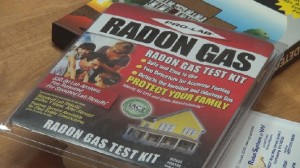 Radon is hazardous, period. It doesn’t matter what the limit is, you want to alleviate exposure to the gas as much as possible, and that’s true of any building or residence where you spend a majority of your time.
Radon is hazardous, period. It doesn’t matter what the limit is, you want to alleviate exposure to the gas as much as possible, and that’s true of any building or residence where you spend a majority of your time.
While we recommend taking action for levels at 2.0 pCi/L or higher, 4.0 is considered to be the danger zone.
Would you like to know what “pCi/L” means? The National Safety Council also has the answer for that.
“A pCI – or picocurie – is a measure of the rate of radioactive decay of radon gas (the tiny particles that can get trapped in your lungs when you breathe).”
It’s a standard unit of measurement for radiation, and since radon is a natural radioactive gas, that’s how it is measured too.
Radon Can Be a Problem In Schools, Daycares, and Nurseries
Homes, apartment buildings, and condos aren’t the only places that can be affected by radon. The gas can seep into any building, including public ones. That means schools, day care centers, work and office buildings, industrial properties and much more.
 But since radon causes the most damage over a long-term period, it’s our children we should be worried about.
But since radon causes the most damage over a long-term period, it’s our children we should be worried about.
Laura Rossinow, a Boston realtor that is also an NRPP Radon measurement provider, believes that there should be laws in place to protect our children and educators.
“Children are raised in homes that have never been tested for radon and they go to schools that have never been tested for radon. Long term exposure is the highest risk! Protect your family…test for radon gas today!”
Sadly – and we did talk about this recently – there aren’t many laws that require schools or day care centers to take action. Most that do exist call for testing a property, but that’s it.
Did you know that an estimated 70,000 US classrooms have high, short-term radon levels? Think of how many children spend time in those classrooms exposed to radon. It’s time to start taking this matter seriously.
Click here to visit Laura Rossinow’s website…
Everyone Should Know About Radon
There are so many alarming statistics and facts related to radon. For instance, did you know radon is the second leading cause of lung cancer in the US? It’s the leading cause in non-smokers.
What about the fact that there are more than 21,000 deaths each year from radon-induced lung cancer? Or, it’s estimated that every one-in-fifteen homes in the US has elevated radon levels within?
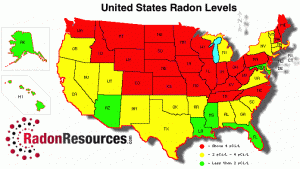 You can find all of these stats – and more – listed on the official US Environmental Protection Agency’s website.
You can find all of these stats – and more – listed on the official US Environmental Protection Agency’s website.
If you don’t know much about radon or the associated dangers, then it’s time you become acquainted.
Chris Kristiansen from AirThings (previously Corentium) explains how Radon levels are affected by the changing seasons.
“Radon levels rise and fall with the seasons, with changes in your home’s ventilation, or changes in the ground around your home. That is why we recommend getting a digital radon detector that shows both short-term and long-term changes to the radon level in your home.”
Ultimately, just because you test earlier in the year and find lower levels doesn’t mean you are in the clear. Radon detectors allow you to constantly monitor the levels in your home, as Chris has successfully explained.
Regular tests of the environment where you spend your time is recommended. So, you should be testing your home more than once per year, but at least once if you want to keep things minimal.
Companies like Airthings also offer a radon detector – similar to a smoke or carbon monoxide detector – which can be used to identify regular levels in your home. This is not out of the question, especially if you live in an area that is more susceptible to radon gas.
Click here to visit the Air Things website…
